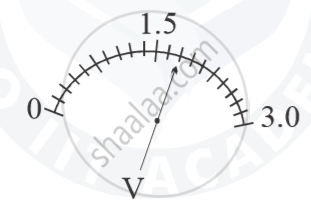Advertisements
Advertisements
प्रश्न
State Ohm's Law. Represent it mathematically.
उत्तर
According to Ohm's law, "Electric current through a metallic conductor is directly proportional to potential difference across the conductor of the circuit provided that temperature remains constant."
Mathematical expression for Ohm's Law: I ∝ V.
Or V = IR
Or I = `"V"/"R"`
Where, R = constant called resistance of a given metal.
APPEARS IN
संबंधित प्रश्न
Is Ohm’s law universally applicable for all conducting elements? If not, give examples of elements which do not obey Ohm’s law.
Write the formula of resistivity
Keeping the p.d. constant, the resistance of a circuit is halved. The current will become:
(a) one-fourth
(b) four time
(c) half
(d) double
How would you connect two resistors in series? Draw a diagram. Calculate the total equivalent resistance.
In the circuit shown below in Fig, calculate the value of x if the equivalent resistance between A and B is 4 Ω.

How does an increase in the temperature affect the specific resistance of a :
(i) Metal and
(ii) Semiconductor ?
Consider the sacle of voltmeter shown in the diagram and answer the following questions :

(a) What is the least count of the voltmeter?
(b) What is the reading shown by the voltmeter ?
(c) If the voltmeter is connected across a resistor of 20 `Omega` how much current is flowing through the resistor?
Tick(✓) the correct choice in the following:
Ohm's law is applicable to
Draw a neat diagram for the verification of Ohm’s law by voltmeter-ammeter method. By another diagram show the relation between p.d. and current.
Two cells each of 5V are connected in series across an 8Ω resistor and three parallel resistors of 4Ω, 6Ω, and 12Ω. Draw a circuit diagram for the above arrangement. Calculate
- the current drawn from the cell
- current through each resistor
